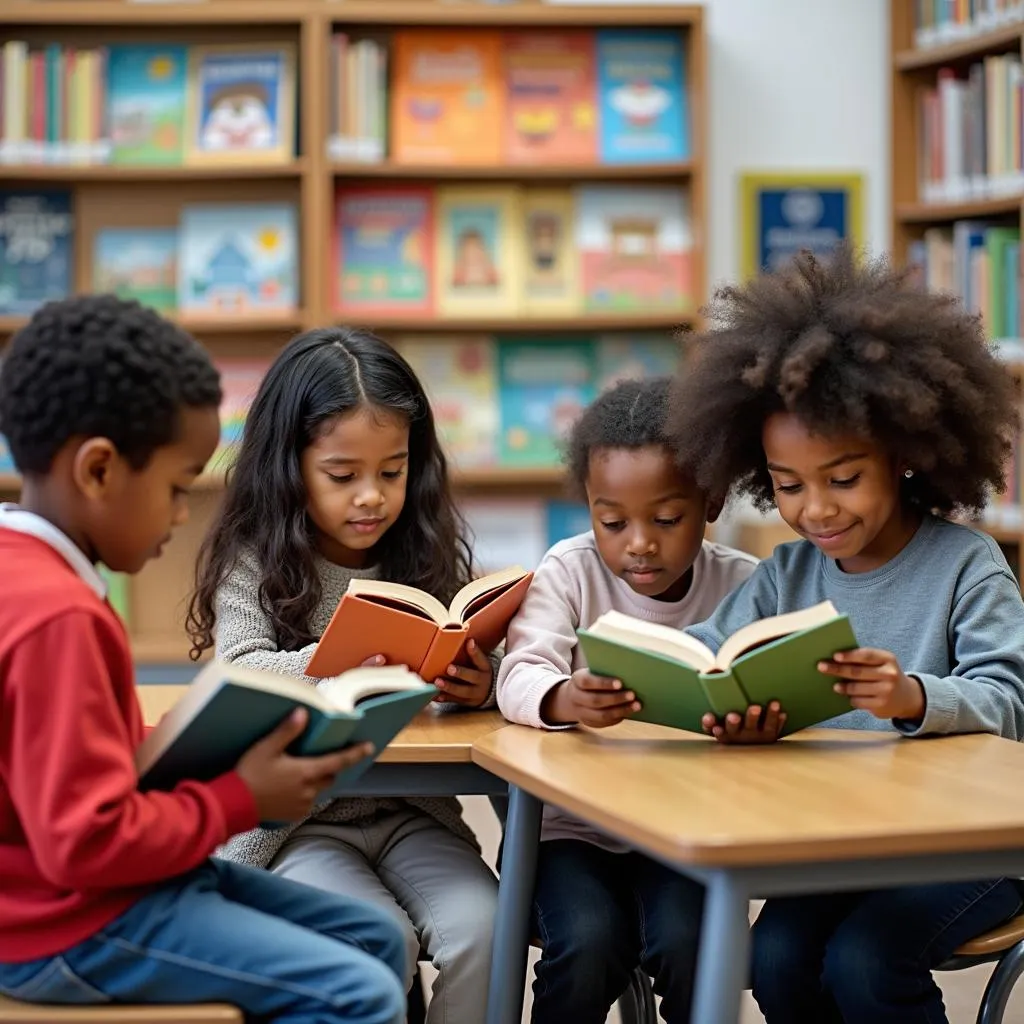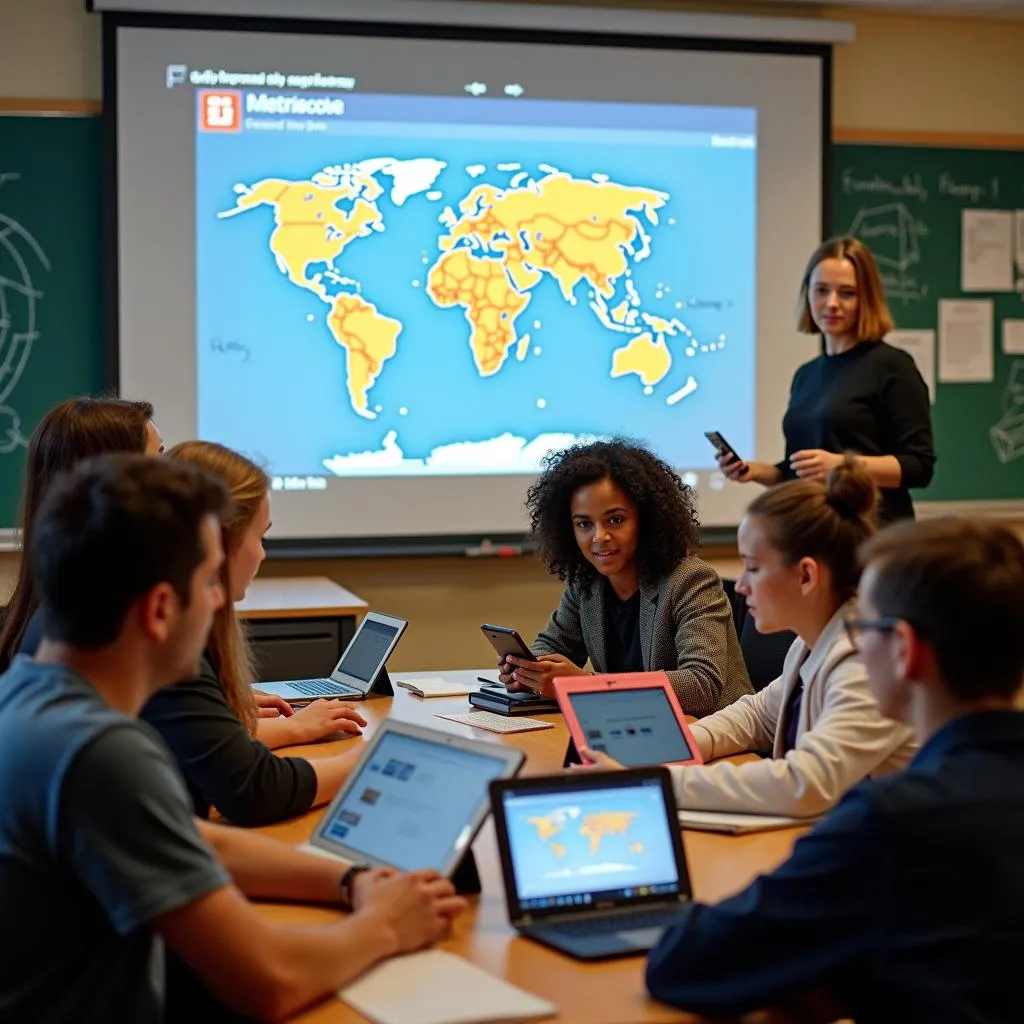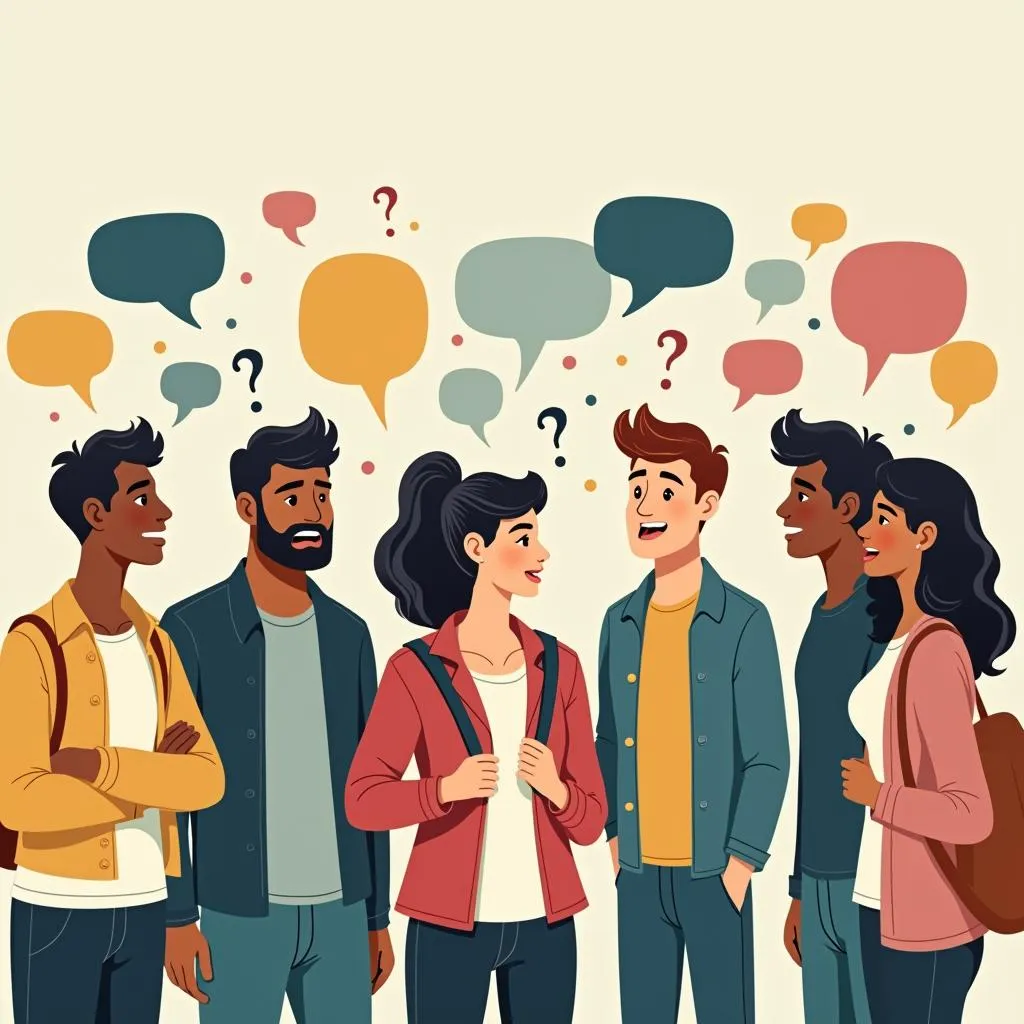The IELTS Reading test often includes passages on diverse topics, including multicultural education and literature. Today, we’ll explore a practice test focused on “The role of literature in multicultural education.” This comprehensive test will help you improve your reading skills while gaining insights into this important subject.
Table Of Contents
- Passage 1 – Easy Text
- The Power of Multicultural Literature in Education
- Questions 1-5
- Questions 6-10
- Passage 2 – Medium Text
- Implementing Multicultural Literature in the Classroom
- Questions 11-14
- Questions 15-19
- Passage 3 – Hard Text
- The Transformative Impact of Multicultural Literature on Educational Paradigms
- Questions 20-23
- Questions 24-26
- Questions 27-30
- Answer Key
- Passage 1
- Passage 2
- Passage 3
The importance of preserving endangered languages through education is closely related to the role of literature in multicultural education, as both topics emphasize the value of cultural diversity in learning environments.
Let’s dive into our IELTS Reading practice test, which consists of three passages of increasing difficulty, followed by a variety of question types and answer keys.
Passage 1 – Easy Text
The Power of Multicultural Literature in Education
Multicultural literature plays a crucial role in shaping students’ understanding of diverse cultures and perspectives. By exposing young readers to stories, poems, and novels from various cultural backgrounds, educators can foster empathy, broaden worldviews, and challenge stereotypes. This approach to education not only enhances cultural awareness but also promotes critical thinking skills.
One of the primary benefits of incorporating multicultural literature into the curriculum is its ability to reflect the experiences of students from diverse backgrounds. When children see themselves represented in the books they read, it can boost their self-esteem and sense of belonging. Simultaneously, it provides opportunities for students from majority cultures to gain insights into the lives of their peers from different backgrounds.
Moreover, multicultural literature serves as a powerful tool for addressing complex social issues. Through carefully selected texts, teachers can facilitate discussions on topics such as racism, discrimination, and cultural identity. These conversations help students develop a more nuanced understanding of societal challenges and encourage them to become active participants in creating a more inclusive world.
Educators who integrate multicultural literature into their teaching practices often report increased student engagement and improved academic performance. By presenting diverse perspectives and storytelling traditions, teachers can capture the interest of a wider range of students and make learning more relevant to their lives.
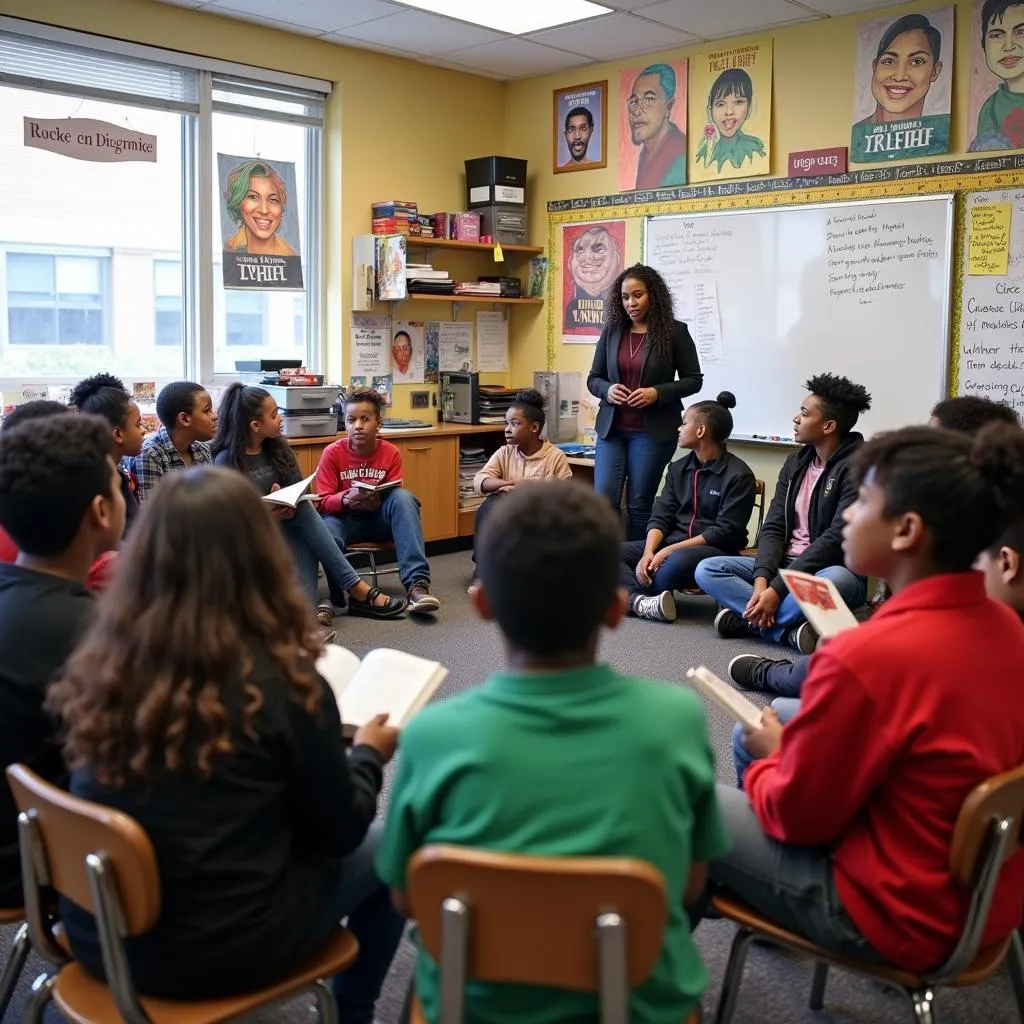 Students discussing multicultural literature in classroom
Students discussing multicultural literature in classroom
Questions 1-5
Do the following statements agree with the information given in the passage? Write
TRUE if the statement agrees with the information
FALSE if the statement contradicts the information
NOT GIVEN if there is no information on this
- Multicultural literature helps students develop empathy and critical thinking skills.
- Reading books from diverse cultures always improves academic performance.
- Multicultural literature can help address complex social issues in the classroom.
- All students prefer reading multicultural literature over traditional texts.
- Teachers report increased student engagement when using multicultural literature.
Questions 6-10
Complete the sentences below. Choose NO MORE THAN TWO WORDS from the passage for each answer.
- Multicultural literature can challenge __ about different cultures.
- When students see themselves __ in books, it can boost their self-esteem.
- Teachers can use multicultural texts to __ discussions on important social topics.
- Incorporating diverse perspectives can make learning more __ to students’ lives.
- Multicultural literature presents various __ traditions to students.
Passage 2 – Medium Text
Implementing Multicultural Literature in the Classroom
The integration of multicultural literature into educational curricula has gained significant traction in recent years, as educators and policymakers recognize its potential to create more inclusive and culturally responsive learning environments. However, the effective implementation of multicultural literature in the classroom requires careful consideration and strategic planning.
One of the primary challenges educators face is the selection of appropriate texts. It is crucial to choose literature that accurately represents diverse cultures without perpetuating stereotypes or oversimplifying complex issues. This requires teachers to engage in ongoing professional development to enhance their cultural competence and critical literacy skills. Additionally, educators must consider the intersectionality of identities represented in the texts, acknowledging that individuals may belong to multiple cultural groups simultaneously.
Another important aspect of implementing multicultural literature is the development of effective teaching strategies. Merely introducing diverse texts is not sufficient; teachers must create opportunities for meaningful engagement and critical analysis. This can be achieved through various methods, such as:
- Comparative analysis: Encouraging students to compare and contrast different cultural perspectives presented in multiple texts.
- Contextual understanding: Providing historical and social context for the literature to help students grasp the nuances of cultural experiences.
- Personal connections: Prompting students to reflect on their own experiences and how they relate to the characters or situations in the texts.
- Collaborative discussions: Facilitating group discussions that allow students to share their interpretations and learn from one another’s perspectives.
The assessment of student learning in relation to multicultural literature also requires careful consideration. Traditional methods of evaluation may not adequately capture the depth of understanding and personal growth that can result from engaging with diverse texts. Educators may need to develop alternative assessment strategies, such as reflective journals, creative projects, or multimedia presentations, to allow students to demonstrate their comprehension and critical thinking skills more holistically.
Furthermore, the integration of multicultural literature should extend beyond the language arts curriculum. Interdisciplinary approaches can enhance the impact of these texts by connecting them to subjects such as history, social studies, and even science. This cross-curricular integration helps students understand the relevance of cultural diversity across various domains of knowledge and real-world applications.
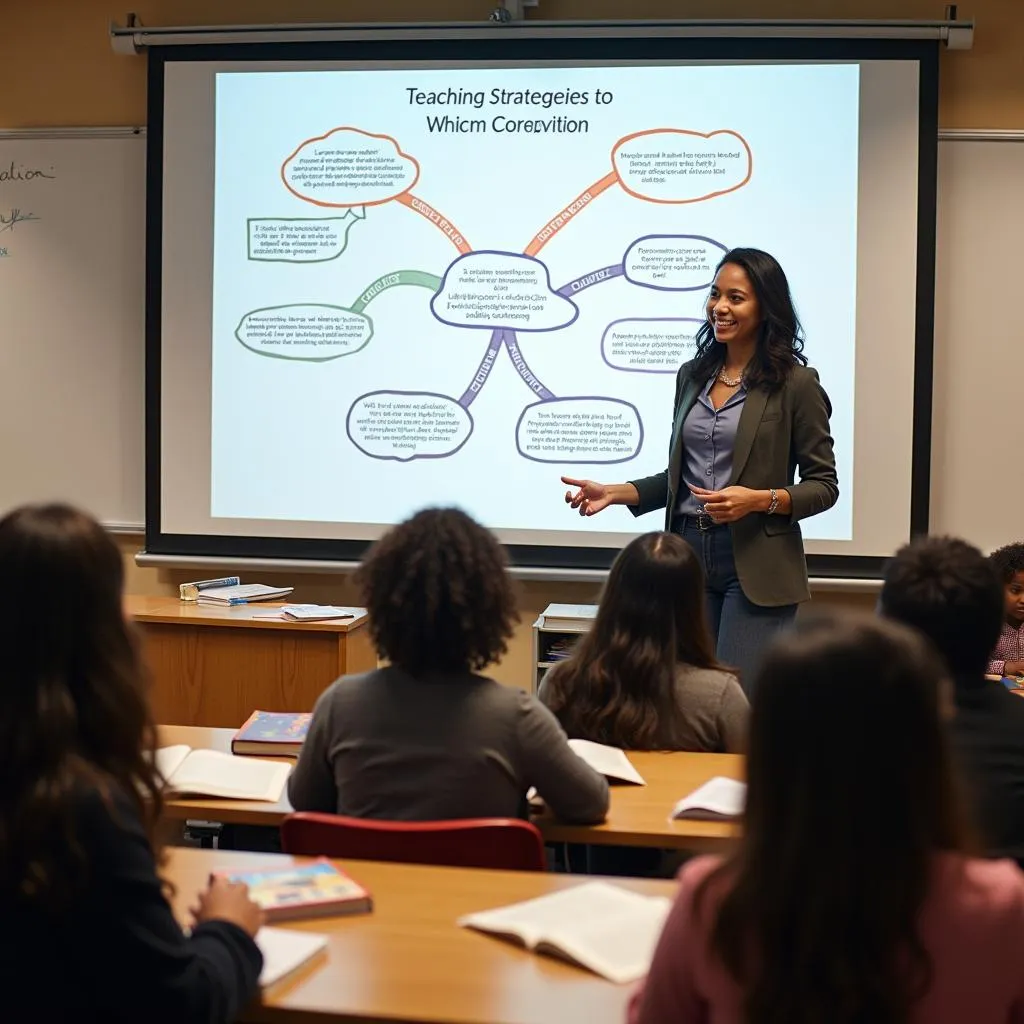 Teacher using various strategies to teach multicultural literature
Teacher using various strategies to teach multicultural literature
Questions 11-14
Choose the correct letter, A, B, C, or D.
-
What is one of the main challenges in implementing multicultural literature in classrooms?
A) Lack of available texts
B) Resistance from students
C) Selecting appropriate texts
D) Limited time in the curriculum -
According to the passage, what is NOT mentioned as a method for engaging students with multicultural literature?
A) Comparative analysis
B) Contextual understanding
C) Personal connections
D) Individual presentations -
What does the passage suggest about traditional assessment methods for multicultural literature?
A) They are the most effective way to evaluate learning
B) They may not fully capture students’ understanding
C) They should be completely abandoned
D) They are preferred by most educators -
How does the passage suggest integrating multicultural literature beyond language arts?
A) Through after-school programs
B) By creating separate cultural studies classes
C) Through interdisciplinary approaches
D) By focusing solely on historical contexts
Questions 15-19
Complete the summary below. Choose NO MORE THAN TWO WORDS from the passage for each answer.
Implementing multicultural literature in the classroom requires careful planning and consideration. Teachers must select texts that accurately represent diverse cultures without (15) __ stereotypes. Effective teaching strategies include comparative analysis, providing (16) __ understanding, and facilitating collaborative discussions. Assessment methods may need to be adapted to better capture students’ (17) __ and personal growth. The integration of multicultural literature should extend beyond language arts through (18) __ approaches, connecting these texts to subjects like history and social studies. This helps students understand the (19) __ of cultural diversity across various domains of knowledge.
Passage 3 – Hard Text
The Transformative Impact of Multicultural Literature on Educational Paradigms
The incorporation of multicultural literature into educational curricula has precipitated a paradigm shift in pedagogical approaches, challenging long-standing assumptions about knowledge transmission and cultural representation in academic settings. This transformation extends beyond mere diversification of reading lists; it encompasses a fundamental reevaluation of the purposes and methodologies of education in increasingly pluralistic societies.
At the core of this shift lies the recognition that literature serves not only as a vehicle for language acquisition and literary analysis but also as a powerful medium for cultural exchange and identity formation. The juxtaposition of diverse narratives within educational contexts facilitates a nuanced understanding of the complexities inherent in multicultural societies, fostering critical consciousness among students. This approach aligns with Paulo Freire’s concept of “conscientization,” wherein education becomes a tool for developing awareness of social, political, and economic contradictions, empowering individuals to take action against oppressive elements in their lives.
The integration of multicultural literature challenges the hegemonic narratives that have traditionally dominated educational discourse. By presenting alternative perspectives and histories, it disrupts the notion of a singular, monolithic cultural experience, instead highlighting the multiplicity of voices that constitute modern societies. This disruption serves a dual purpose: it validates the experiences of marginalized groups while simultaneously encouraging members of dominant cultures to critically examine their own positionality and privilege.
However, the implementation of multicultural literature in educational settings is not without its challenges. Critics argue that superficial or tokenistic inclusion of diverse texts may inadvertently reinforce stereotypes or present oversimplified views of complex cultural dynamics. To mitigate these risks, educators must engage in a process of critical selection and contextualization, ensuring that the literature chosen represents authentic voices and experiences. This necessitates ongoing professional development for teachers to enhance their cultural competence and critical literacy skills.
Moreover, the pedagogical approaches employed in teaching multicultural literature must evolve to fully harness its transformative potential. Traditional methods of literary analysis may prove insufficient in capturing the nuanced cultural, historical, and social contexts embedded within these texts. Educators are thus tasked with developing innovative strategies that promote deep engagement and critical reflection. These may include:
- Comparative textual analysis: Examining works from different cultural traditions to identify commonalities and divergences in themes, narrative structures, and cultural representations.
- Collaborative meaning-making: Facilitating dialogic learning environments where students can share diverse interpretations and negotiate understanding collectively.
- Multimodal engagement: Incorporating visual arts, music, and digital media to provide multidimensional explorations of cultural narratives.
- Experiential learning: Connecting literary texts to real-world experiences through community engagement projects or cultural immersion activities.
The assessment of learning outcomes in relation to multicultural literature presents another area for pedagogical innovation. Traditional evaluative measures may fail to capture the depth of intercultural understanding and personal transformation that engagement with diverse texts can engender. Alternative assessment strategies, such as reflective portfolios, creative projects, or community-based research, may provide more holistic insights into students’ developing cultural competencies and critical consciousness.
The role of climate change in exacerbating poverty is another complex topic that, like multicultural literature, requires students to engage with diverse perspectives and understand global interconnections.
Furthermore, the impact of multicultural literature extends beyond individual classrooms, potentially catalyzing broader institutional and societal change. As students develop more nuanced understandings of cultural diversity and social justice issues, they may be empowered to challenge discriminatory practices and advocate for more inclusive policies within their educational institutions and wider communities. This ripple effect underscores the transformative potential of multicultural literature as a tool for fostering social cohesion and promoting equitable social structures.
In conclusion, the integration of multicultural literature into educational paradigms represents a significant shift in approaches to teaching and learning. By challenging dominant narratives, fostering critical consciousness, and promoting intercultural understanding, this pedagogical approach has the potential to transform not only individual learners but also the broader societal contexts in which education takes place. As educators continue to navigate the complexities of implementing multicultural literature in meaningful ways, they contribute to the ongoing evolution of education as a force for social change and cultural understanding in an increasingly interconnected world.
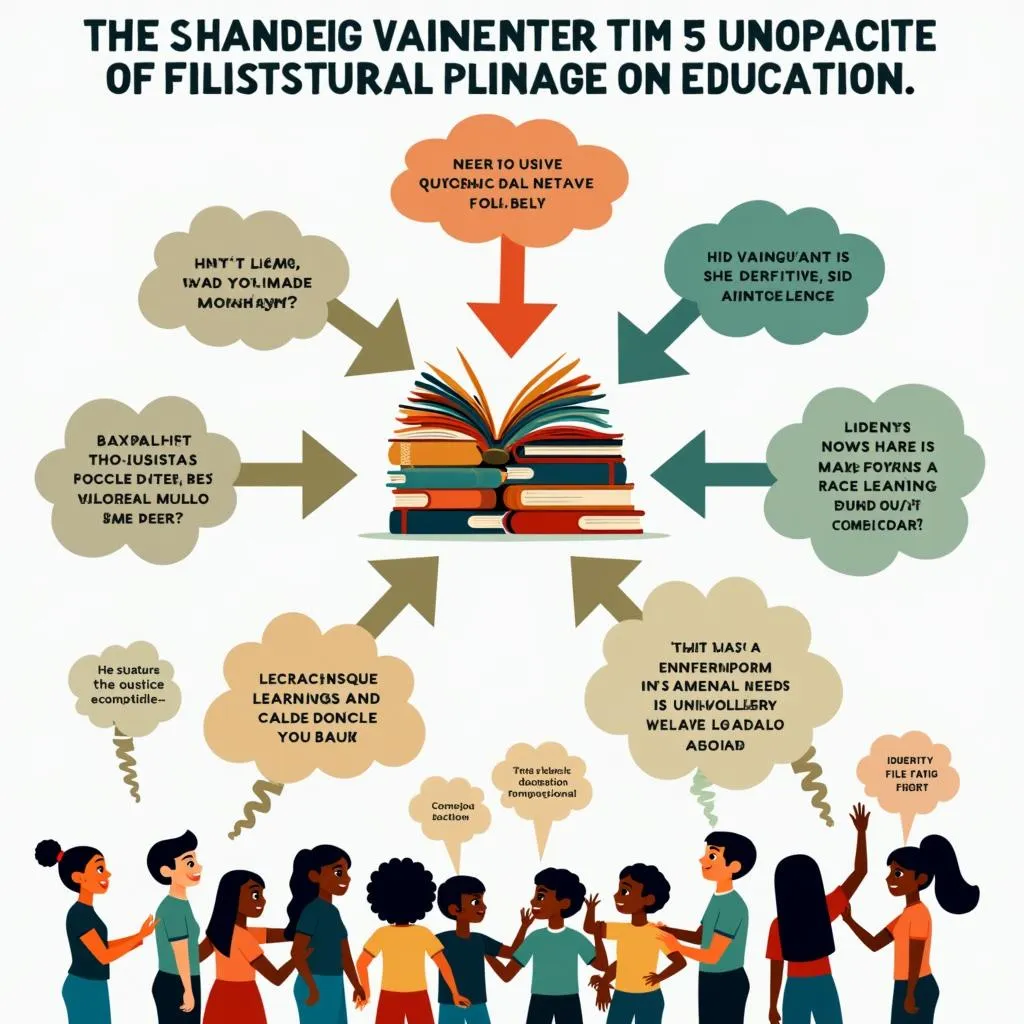 Visual representation of multicultural literature's impact on education
Visual representation of multicultural literature's impact on education
Questions 20-23
Choose the correct letter, A, B, C, or D.
-
According to the passage, what is the primary purpose of incorporating multicultural literature into education?
A) To improve language acquisition skills
B) To challenge traditional educational paradigms
C) To increase student enrollment in literature courses
D) To simplify complex cultural dynamics -
What concept by Paulo Freire is mentioned in relation to multicultural literature?
A) Banking education
B) Dialogic learning
C) Conscientization
D) Cultural capital -
What risk does the passage identify in the implementation of multicultural literature?
A) Decreased student engagement
B) Reinforcement of stereotypes through superficial inclusion
C) Overemphasis on dominant cultural narratives
D) Reduced focus on traditional literary analysis -
According to the passage, how can multicultural literature impact society beyond the classroom?
A) By increasing tourism to diverse cultures
B) By promoting economic growth in marginalized communities
C) By empowering students to challenge discriminatory practices
D) By standardizing educational curricula across different cultures
Questions 24-26
Complete the sentences below. Choose NO MORE THAN TWO WORDS from the passage for each answer.
- The integration of multicultural literature challenges __ narratives that have dominated educational discourse.
- Educators must develop innovative strategies to promote deep engagement and __ reflection.
- Traditional evaluative measures may fail to capture the depth of __ understanding that engagement with diverse texts can produce.
Questions 27-30
Do the following statements agree with the claims of the writer in the passage? Write
YES if the statement agrees with the claims of the writer
NO if the statement contradicts the claims of the writer
NOT GIVEN if it is impossible to say what the writer thinks about this
- Multicultural literature serves only as a tool for language acquisition and literary analysis.
- The implementation of multicultural literature in education is a straightforward process without challenges.
- Alternative assessment strategies may provide more holistic insights into students’ cultural competencies.
- The impact of multicultural literature is limited to individual classrooms and does not affect broader societal change.
Answer Key
Passage 1
- TRUE
- NOT GIVEN
- TRUE
- NOT GIVEN
- TRUE
- stereotypes
- represented
- facilitate
- relevant
- storytelling
Passage 2
- C
- D
- B
- C
- perpetuating
- contextual
- comprehension
- interdisciplinary
- relevance
Passage 3
- B
- C
- B
- C
- hegemonic
- critical
- intercultural
- NO
- NO
- YES
- NO
This IELTS Reading practice test explores the crucial role of literature in multicultural education, providing you with valuable practice in various question types while deepening your understanding of this important topic. Remember to apply the reading strategies you’ve learned and manage your time effectively when tackling similar passages in your actual IELTS exam.
